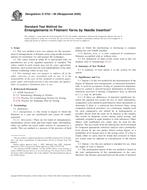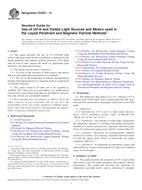Click here to purchase
1.1 This test method covers procedures for preparing, curing, and testing laboratory-compacted specimens of soil-lime and other lime-treated materials (Note 1) for determining unconfined compressive strength. This test method can be used for specimens prepared at the maximum unit weight and optimum water content, or for specimens prepared at other target unit weight and water content levels. Cored specimens of soil-lime should be tested in accordance with Test Methods D 2166.
Note 1 — Lime-based products other than commercial quicklime and hydrated lime are also used in the lime treatment of fine-grained cohesive soils. Lime kiln dust (LKD) is collected from the kiln exhaust gases by cyclone, electrostatic, or baghouse-type collection systems. Some lime producers hydrate various blends of LKD plus quicklime to produce a lime-based product.
1.2 Two alternative procedures are provided:
1.2.1 Procedure A describes procedures for preparing and testing compacted soil-lime specimens having height-to-diameter ratios between 2.00 and 2.50. This test method provides the standard measure of compressive strength.
1.2.2 Procedure B describes procedures for preparing and testing compacted soil-lime specimens using Test Methods D 698 compaction equipment and molds commonly available in most soil testing laboratories. Procedure B is considered to provide relative measures of individual specimens in a suite of test specimens rather than standard compressive strength values. Because of the lesser height-to-diameter ratio (1.15) of the cylinders, compressive strength determined by Procedure B will normally be greater than that by Procedure A. Results of unconfined compressive strength tests using Procedure B should not be directly compared to those obtained using Procedure A.
1.3 The values stated in SI units are to be regarded as the standard. The values given in parentheses are for information only.
1.3.1 The use of balances or scales to record pounds of mass (lbm) or to record density in pounds of mass per cubic foot (lbm/ft 3) should not be regarded as nonconformance with this test method.
1.4 This standard does not purport to address all of the safety concerns, if any, associated with its use. It is the responsibility of the user of this standard to establish appropriate safety and health practices and determine the applicability of regulatory limitations prior to use. For specific precautionary statements, see Section 8
Product Details
- Published:
- 05/10/1996
- Number of Pages:
- 6
- File Size:
- 1 file , 57 KB


